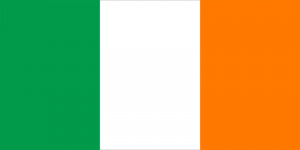Language/Irish/Grammar/Plurals
Hi Irish learners! 😊
In this lesson, we are going to talk about plurals in the Irish language. Plurals refer to nouns indicating more than one object. You may find this topic challenging, but don't worry, we will break it down for you, and with practice, you will get better. So, let's get started!
Basic Rules
In Irish, plurals are formed by changing the ending of the noun. The change in the ending depends on the gender of the noun. In general, masculine nouns change their endings by adding "-aí" or "-í", while feminine nouns change their endings by adding "-anna" or "-acha".
Masculine Plurals
For masculine nouns, there are several rules to follow.
- Nouns ending in a broad consonant add "-aí" to form the plural. Example:
| Irish | Pronunciation | English |
|---|---|---|
| fear | /fɑr/ | man |
| fir | /fʲəɾʲ/ | men |
- Nouns ending in "-ín" or "-án" change the "-ín" to "-igh" or "-án" to "-áin". Example:
| Irish | Pronunciation | English |
|---|---|---|
| bádóirín | /bɑːd̪ˠoːɾʲiːnʲ/ | small boat |
| bádóirigh | /bɑːd̪ˠoːɾʲiː/ | small boats |
| páistín | /pɑːʃtʲiːnʲ/ | child (girl) |
| páistí | /pɑːʃtʲiː/ | children (girls and boys) |
- Nouns ending in "-éad" and "-ín" change to "-idí". Example:
| Irish | Pronunciation | English |
|---|---|---|
| pócaid | /pˠoːkədʲ/ | pockets |
| plátaí | /plɑːt̪ˠiː/ | plates |
- Nouns ending in "-ín" add "-í". Example:
| Irish | Pronunciation | English |
|---|---|---|
| bád | /bɑːd̪ˠ/ | boat |
| báid | /bɑːdʲ/ | boats |
Feminine Plurals
For feminine nouns, the following general rules apply:
- Nouns ending in "-óg" add "-oga" to form the plural. Example:
| Irish | Pronunciation | English |
|---|---|---|
| cailín | /kælʲiːnʲ/ | girl |
| cailíní | /kælʲiːnʲiː/ | girls |
- Nouns ending in "-ín" change "-ín" to "-eanna". Example:
| Irish | Pronunciation | English |
|---|---|---|
| comhrádán | /kʊɾˠəd̪ˠɑːn/ | friend (female) |
| comhrádanna | /kʊɾˠəd̪ˠɑːnˠə/ | friends (female) |
- Nouns ending in "-lann" and "-tíl" change to "-lainne" in the plural. Example:
| Irish | Pronunciation | English |
|---|---|---|
| duine | /d̪ˠɪnʲə/ | person |
| daoine | /d̪ˠiːnʲə/ | people |
Exceptions and Special Plurals
As with any language, there are exceptions to Irish plurals. - For example, "cathair" (city) becomes "cairteacha" in the plural. - "Bád" (boat), "cros" (cross), and "tosach" (beginning) have irregular plural forms.
Additionally, some words undergo spelling alterations when forming its plural, such as "foclóir" (dictionary), which becomes "foclóirí" in its plural form.
Dialogue
To better illustrate how plurals work in Irish, here is a dialogue:
- Person 1: Tá mé ag lorg leabhair. (I am looking for books.)
- Person 2: Cén soirt leabhar atá uait? (What kind of books do you want?)
- Person 1: Ba mhaith liom leabhair Gaeilge. (I want Irish language books.)
- Person 2: Tá rogha mór agat. (You have a big selection.)
Practice
Here are some practice exercises to reinforce the concepts we just covered. Translate the following words into English, then write their plurals in Irish:
1. Stad 2. Seomra 3. Sagart 4. Céad 5. Bliain
Answers:
1. Stop, Stadanna 2. Room, Seomraí 3. Priest, Sagairtí 4. Hundredth, Céadta 5. Year, Blianta
Keep practicing and building your Irish vocabulary!
Conclusion
Congratulations for making it to the end of this lesson, you have learned the basics of forming plurals in Irish. Remember to put this knowledge into practice by speaking with native speakers and asking them any questions. To improve your Irish Grammar, you can also use the Polyglot Club website. With consistency, you will become more proficient with Irish grammar and become closer to fluency. Keep up the good work! 😊
Sources
- Irish/Reference/Nouns - Wikibooks, open books for an open world
- Plural of nouns - Irish language lesson
- Irish pluralization rules – Daltaí na Gaeilge
Related Lessons
- Negation
- Irish Modal Verbs (need, want, must, can)
- Imperative Mood
- Future Tense
- Adjectives
- Give your Opinion
- Pronouns
- Questions
- Personal pronouns


